Last Sunday 4 November 2012, we visited Korthi, and then drove in our two vans across the fertile Korthi Valley to Andros (Chora), where we had lunch. Following are some photos to give you a glimpse of the town of Korthi.
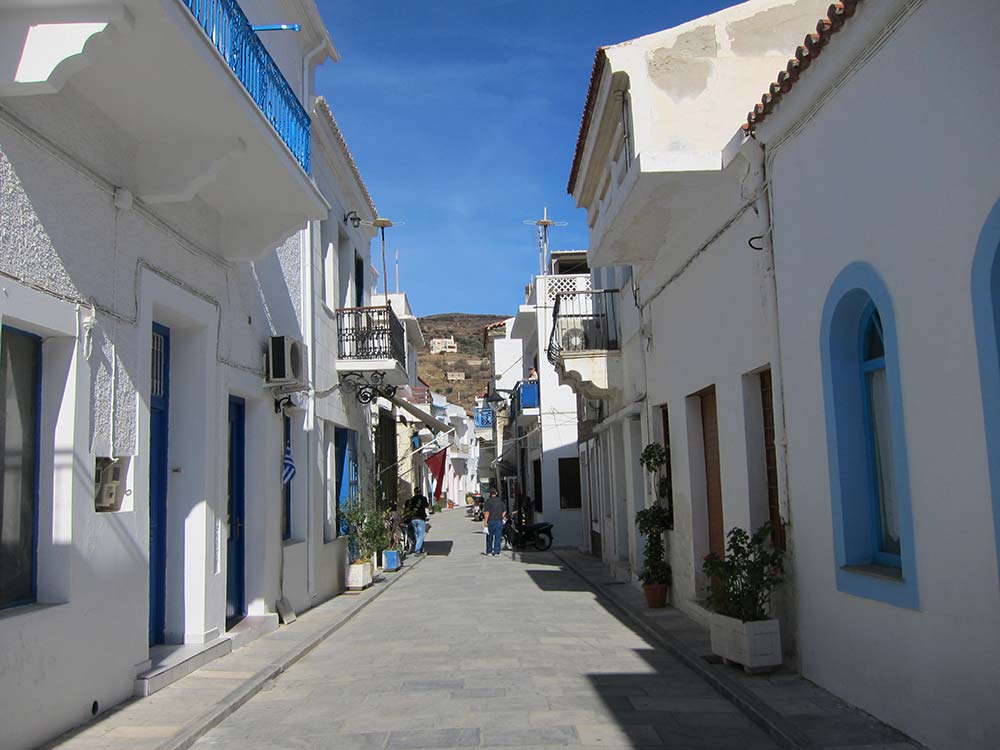
Last Sunday 4 November 2012, we visited Korthi, and then drove in our two vans across the fertile Korthi Valley to Andros (Chora), where we had lunch. Following are some photos to give you a glimpse of the town of Korthi.


The map at right shows the places we have been in our three weeks here so far: Gavrio, the port at which we arrived on the island; Batsi, where we are staying; Stavropeda, where we usually park the vans and from where we walk down to Zagora; Zagora; the capital, Andros (Chora – meaning ‘centre’), Ano Aprovato (where we attended the Tsipouro Feast), Paleopolis (we visited the Paleopolis Archaeological Museum at Paleopolis, a specially arranged excursion, on our way to work last Saturday 3 November). On Sunday 4 November, most of us went on an excursion in our two vans to Korthi, where we had coffee, and then drove west across the fertile valley of Korthi to Andros (Chora) for lunch (some photos coming in future posts).
by Irma Havlicek, Powerhouse Museum Online Producer
with Andrew Wilson, Archaeologist and Database Specialist
representing Arts eResearch at the University of Sydney

Developments in technology are enabling huge advances in how we can record – and later easily filter and aggregate – information, and the Zagora team are taking advantage of the benefits of such technologies.
A new system is being developed by Arts eResearch at the University of Sydney to enable digital recording on the spot of all relevant information for each grid.
by Andrew Wilson, Archaeologist and Database Specialist
representing Arts eResearch at the University of Sydney
with Irma Havlicek, Powerhouse Museum Online Producer
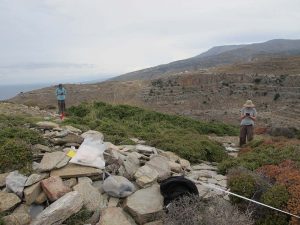
This has to be done systematically so that we can gain an understanding of the entire site. The best way to do that is to walk the entire site, using grids. In this post, I hope to explain how the grid system works at Zagora.
by Irma Havlicek
Powerhouse Museum Online Producer
Hugh Thomas, videographer extraordinaire, has produced this (2 mins 26 secs, mostly time-lapse) video review of some of the work that was done in the first week of the Zagora Archaeological Project.
That work included site clearing to enable geophysical survey to be done, and work to the dig hut: creation of a doorway, placement of stones to build steps and also to construct a table inside the dig hut. There is also a dramatic moment when Hugh is hurt in pursuit of his art. And there is aerial vision Hugh shot from a helicopter over the site of Zagora in May 2012.
by Irma Havlicek
Powerhouse Museum Online Producer
I showed some photos in an earlier post about the site clearing we did in order to enable the geophysical work to be done.
Here are some before and after panoramas, taken by Hugh Thomas, which give a better idea of the scale of site clearing that was done in the first week of the project.
Before:

After:

by Irma Havlicek
Powerhouse Museum Online Producer
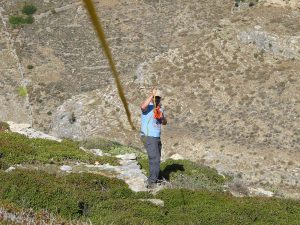
Each team is assigned to a particular grid, and that grid has to be marked out with measuring tape or string, attached to stakes that have already been placed in the ground to mark the corners of the grids. The purpose of the tape or string, is to make clearly visible what is the boundary of the grid you are working on, so that any artefacts you find in that grid can be bagged and marked with which grid it came from. This means that as the findings of each grid are researched, clearer information about the whole site emerges.
by Irma Havlicek
Powerhouse Museum Online Producer

Lydia Beaumont-Cankaya was keen to celebrate Halloween in some small way, so asked us to dress up in costumes for dinner. Some of the team took up the challenge, so I thought I’d share with you a few of the snaps I took over dinner.
Thanks to Lydia for organising a fun night. She had even hand-made and decorated cardboard cones which she filled with chocolate and treats, and gave one to each of us after dinner.
by Paul Donnelly
Powerhouse Museum Curator, Design and Society
and Archaeologist
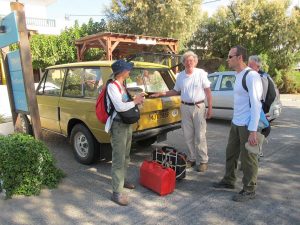
by Irma Havlicek
Powerhouse Museum Online Producer
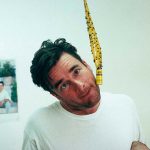
In the Q&A with Archaeologists section of the website, archaeologists answer questions I’ve put to them – and also some questions they put to themselves – to give you an idea of what kinds of people become archaeologists. Their answers also reveal the different experiences and careers archaeologists can have.
If that’s not enough, they’re also really interesting to read, and they have great pictures!